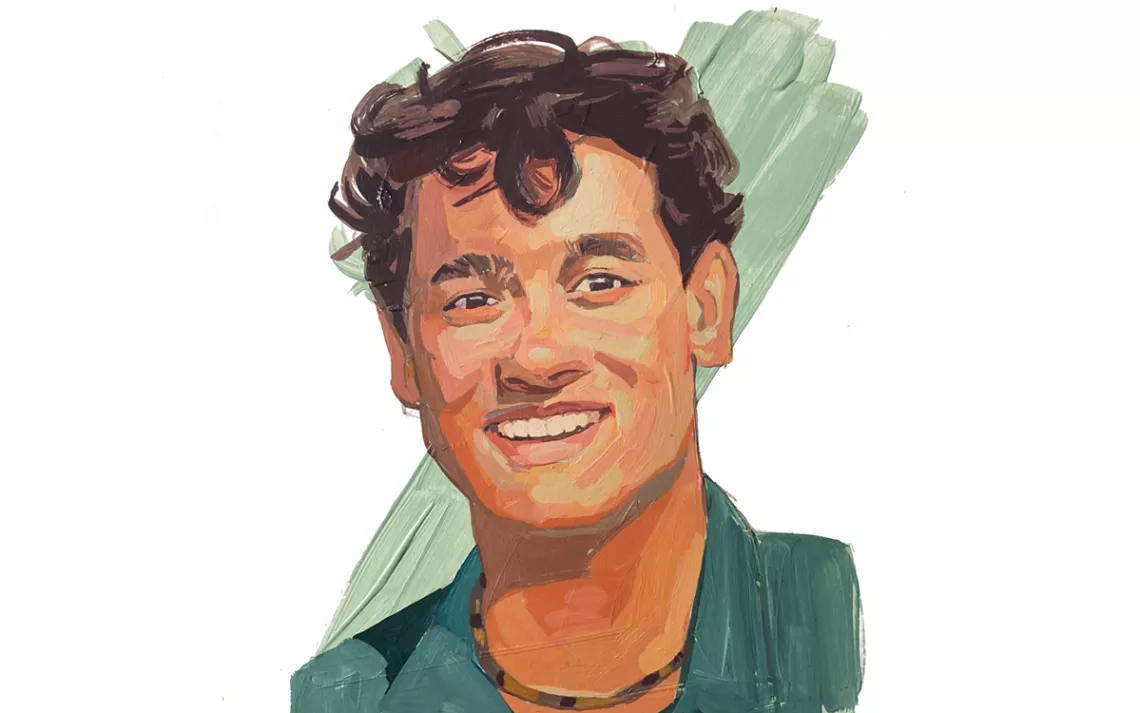Shiva Rajbhandari Is a Textbook Example of Taking Action
From student organizer to climate justice advocate and now school board member

Illustration by Jon Stich
Editor's note: High school senior and climate justice activist Shiva Rajbhandari won elected office in Boise, Idaho, this week after running for a seat on the school board. Here he tells the story of becoming an activist in his own words.
I learned about climate change in 2017, when I was in seventh grade. I was lucky to attend a science-oriented school where it was included in a class on earth sciences. Talking to my peers, I heard that a lot of students didn't have that experience, because the subject wasn't a part of the Idaho state course standards. I learned how existential the climate crisis is, and I got frustrated: It seemed like no one in Boise was talking about this. How could that be?
Two years later, I attended the Global Climate Strike. Millions of young people participated around the world. In Idaho, around 1,500 turned out. So I got involved with the Sunrise Movement and eventually started an Extinction Rebellion youth chapter. Our first protest was in January 2020 at a Chase bank, where we demanded that it divest from fossil fuels. We kept up the pressure. We met regularly at the library, took action around Earth Day, blocked off the street in front of the capitol building for a die-in, and went to our senator's office to demand change.
Then COVID-19 struck and most of that organizing stopped. We got active online. We made Earth Day Live: Boise, a webcast thing. In 2021, that inspired me to help form a coalition of young people from elementary school to college, Youth Salmon Protectors, to mobilize around the four dams on the Lower Snake River and the crisis they create for the fish. We wrote letters to the editor supporting an initiative to breach these dams. The Affiliated Tribes of Northwest Indians, which had been leading this fight, came out in support of the plan. It was super-duper cool.
I left Extinction Rebellion and got a part-time job with the Idaho Conservation League, where I started working to save wild salmon and steelhead. During our organizing, I met Jen Pearce, a Boise State University professor. She was working to educate students about the climate crisis and taught a class on climate science. In spring 2021, I signed up and got eight of my friends to do the same. Then in late June, I got an email that the class would cost each of us $1,100. Feeling desperate, I sent a letter to Jane Fonda, because I had seen her and Ted Danson get arrested at a protest. I asked if she would be willing to pay for one high school student to take this college class and learn more about climate change. I wasn't expecting her to respond. But then about two weeks later, I get a call from a number in Georgia. A voice said to me, "Hi, this is Jane Fonda." I was floored.
She agreed to pay for all nine of us to take the class so that we could get the education on climate change we should be getting in K–12. In exchange, we agreed to deliver a petition to our congressional representative demanding that Idaho divest from fossil fuels. Oh my gosh, I learned so much from that class! Like what the climate crisis means for public health, Idaho's economy, and marginalized communities around the world. We all produced different final projects for the course. I designed intersectional math problems that could be used in a calculus course. My friend built a platform for students' climate stories. Another friend put on an art show. At the end of the course, we all got to present our final projects to Jane Fonda on Zoom. That was so sick.
My dad is from Nepal. People are dying there from pollution. My grandma died of lung cancer. We here in the United States have so much power and privilege. We can decide the whole fate of the world if we act. And yet to this day, when I look at my textbooks, there's nothing in them about climate change to teach young people about it and what they can do. That needs to change.
This article appeared in the Fall 2022 quarterly edition with the headline "Textbook Example."
 The Magazine of The Sierra Club
The Magazine of The Sierra Club



